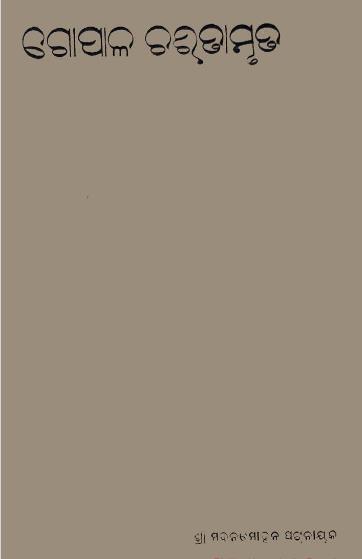In the expansive realm of Odia literature, the work Gopala Charitamruta, penned by the distinguished poet Madana Mohana Patnaik and published in 1931, holds a revered place. This collection of poetry is not only a celebration of divine love and devotion but also a profound exploration of the themes surrounding Lord Krishna, a central figure in Hindu theology and philosophy. Through rich imagery and lyrical elegance, Patnaik invites readers into an intimate world of spirituality and emotional depth.
The title Gopala Charitamruta translates to The Nectarous Tales of Gopala, referring to Krishna’s childhood as a cowherd, or Gopala. This work encapsulates the essence of Krishna’s playful yet profound interactions with the world around him. Patnaik’s poetry delves into the myriad stories of Krishna’s life, blending narrative elements with devotional fervor. Each poem serves as a vessel for expressing the poet’s deep reverence for the divine while also inviting readers to reflect on their own spiritual journeys.
One of the most captivating aspects of Gopala Charitamruta is Patnaik’s use of evocative imagery and symbolism. His vivid descriptions of pastoral scenes, vibrant festivities, and the enchanting beauty of nature transport readers to an idyllic world where divine and earthly realities intertwine. Through his words, Patnaik creates a sensory experience that not only illustrates the charm of Krishna’s childhood but also symbolizes the universal truths of love, joy, and transcendence.
Patnaik’s ability to weave together personal emotion and universal themes is particularly remarkable. The poems reflect the complexities of human emotions—love, longing, joy, and sorrow—all framed within the context of devotion to Krishna. This interplay resonates deeply with readers, as it captures the essence of the human experience in relation to the divine. The poet’s expressions of devotion remind us that love for the divine often mirrors our most profound relationships, making the spiritual path relatable and accessible.
Furthermore, Gopala Charitamruta showcases the rich cultural tapestry of Odisha through its incorporation of local traditions, festivals, and folklore. Patnaik draws upon the vibrant cultural practices associated with Krishna worship, illuminating the regional significance of these tales. By doing so, he not only pays homage to Krishna as a universal figure but also roots his poetry in the local context, thereby preserving and celebrating Odia cultural heritage.
The book’s lyrical quality and rhythmic structure enhance its appeal, transforming the reading experience into one of musicality and flow. Patnaik’s deft use of meter and rhyme adds an element of harmony that complements the thematic richness of the content. This musicality is particularly fitting, given that Krishna is often associated with music and the arts, making the poetic form a natural choice for expressing his divine qualities.
In addition to its artistic merit, Gopala Charitamruta serves as a source of spiritual inspiration. The work encourages readers to cultivate a deep sense of devotion and to seek spiritual fulfillment through the lens of love and surrender to the divine. Patnaik’s portrayal of Krishna is not confined to mere mythological retellings; rather, it is a call for readers to engage with the divine in their own lives, to find joy and meaning in their spiritual quests.
Books Info
| Books name | Gopala Charitamruta / ଗୋପାଳ ଚରିତାମୃତ |
| Author | Madana Mohana Patnaik |
| No Of pages | 113 |
| Publisher | Madana Mohana Patnaik |
| Publication | 1931 |
| Printed At | NA |
| Distributor | NA |

